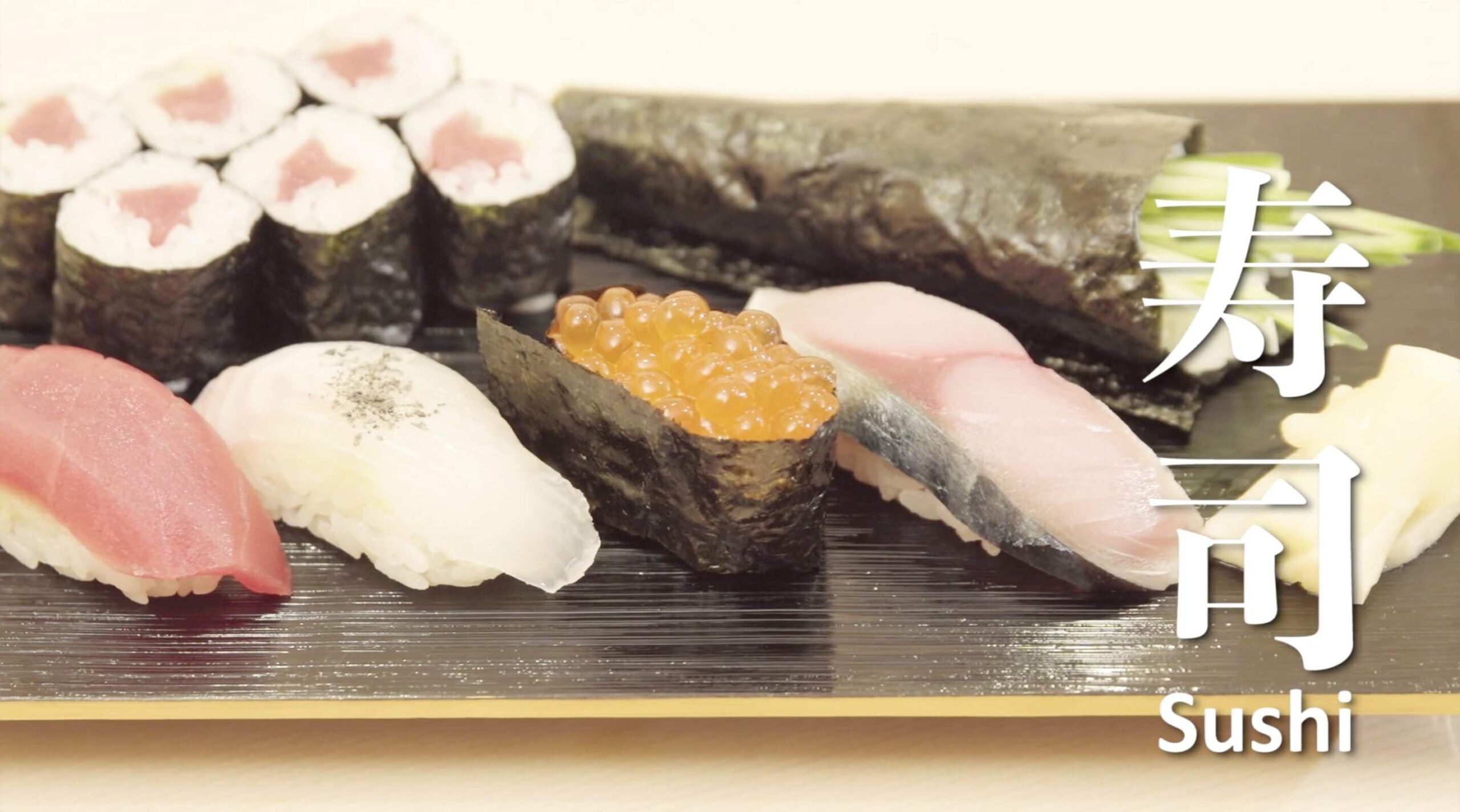Sushi is a traditional Japanese dish with vinegared rice (shari) and garnished with raw fish or vegetables called neta. In between the fish and vinegared rice, a spicy horseradish called Wasabi is used. Wasabi works to erase the fishy smell and helps to bring out Umami from the fish. Sushi is dipped in soy sauce called Murasaki before eating. There are several types of sushi, such as nigiri, gunkan maki, and maki-zushi. For neta like salmon roe and sea urchin, gunkan maki is used. It is a type of sushi where nori is wrapped around the rice to make a cup and the neta is placed on top. Maki-zushi is a typeof sushi where a sheet of nori is layered with sushi rice and neta and tightly rolled. Other types include, inari sushi, oshi-zushi, and bara-zushi. Vinegar is used in shari has and antibacterial effect and works to help slow the spoiling of the fish. It also increases our appetite and brings out umami from the fish. There are two main types of neta used in Sushi, white fish and dark meat fish. White fish used in sushi includes fish such as flat fish, red snapper, and flounder. White fish is low in fat and full of good protein. Dark meat fish used in sushi includes fish such as, bonito, yellowtail, tuna, and mackerel. Dark meat fish is more fattier than white fish, but is full of good protein and DHA/EPA, which is particular to dark meat. Protein in fish digest easier in our stomach than animal meat, so it is preferred by children and senior citizens as a good source of protein. Sushi is served in a traditional “Tachi Sushi” style, where sushi chef personally makes the sushi in front of you, as well as more price friendly style called “Kaiten Zushi”, where we pick sushi from a circling conveyer belt. Either way, sushi is considered a special feast in Japan and is enjoyed by many.
NOURISH AND ENRICH YOUR LIFE

